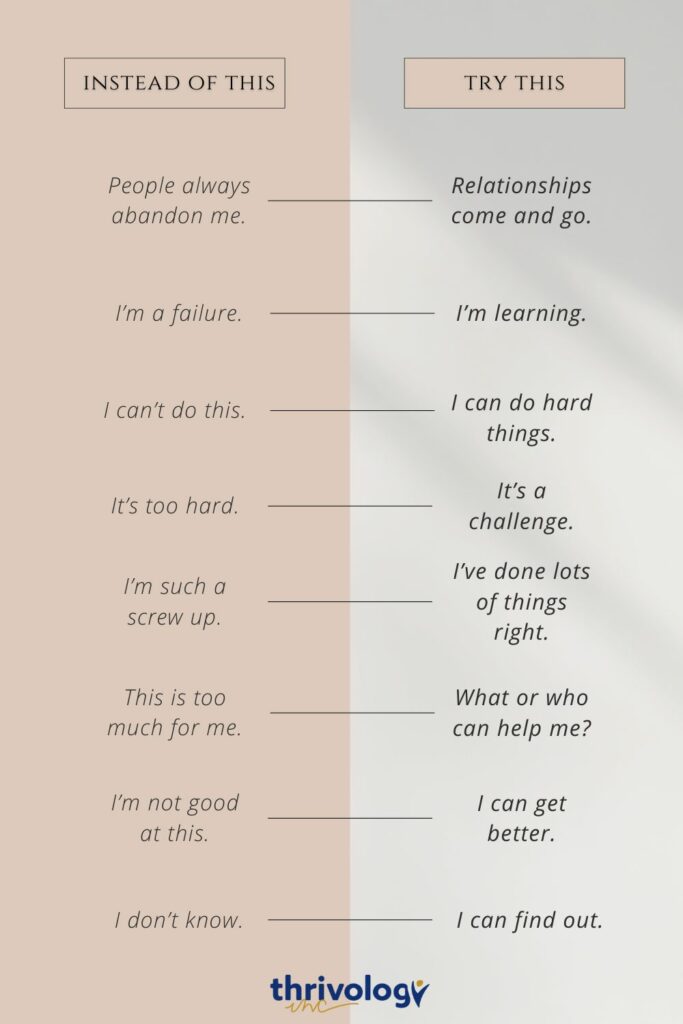
You’ve probably heard of negative self-talk. That internal dialogue that happens when anything else happens where we feel the need to analyze, narrate, or even just wonder (in a negative way). Saying those negative things about yourself, to yourself, is most often rooted in insecurities, not facts. And it can be just as damaging to your sense of self as if someone else said the same thing to you.
It takes self-awareness to challenge those negative thoughts. For someone without a lot of self-awareness, it might just sound like an inner critic who is always right. But you do get to choose how you think about yourself. You can choose to think positive, or even just neutral, but it takes a lot of work.
Negativity Bias
Humans seem to have a negativity bias. This bias causes us to lean toward viewing things as negative, and noticing the negatives faster than the positives. This can happen when viewing the words or actions of others we are in relationship with, or viewing our own word and actions, our emotions, or even our thoughts.
In couples, this also happens when longstanding resentment and unresolved issues exist. John Gottman’s Negative Sentiment Override is negativity bias on steroids. NSO causes the person to view EVERYTHING as negative even when it is actually neutral or positive. And sometimes both members of the couple have NSO going on.
Interrupting your internal negative dialogue is the first step in counteracting these negative forces. And it could be as simple as…
“Nope, I’m not thinking that today. I am thinking ______.”
You might have to do that 100 times. But eventually, you will retrain your brain to not go to those certain negative spaces. Or, you could try a reframe to alter how you are looking at the situation.
The Reframe
A reframe is a way of repackaging information. The same picture in two different frames looks completely different. It is also the same with information in different contexts. The purpose of a reframe is to move something from a negative to a neutral, or positive.
For example, someone might think (or even say), “People always abandon me.” Now that’s a tough statement and they probably have the relational history to back it up, or at least think they do.
What if that same person was able to reframe that thought into, “Relationships come and go.” How would that impact their next thought or course of action? That is definitely a more neutral statement that has no implication about the person saying it or the people in their past.
The same thing happens if we take the statement, “This is too much for me” and reframe it to, “What or who can help me?” No longer a negative, but a hunt for resources.

This process of reframing how we view a person or situation is powerful. And it can change a person’s outlook on their life, their situation, or their relationships.
Related: 10 Thinking Errors Contributing to Poor Mental Health
If you need help with reframes, give us a call. We would love to help you, or someone you love, reframe their thoughts.
- Avoidance Behavior - April 23, 2024
- Stop Lying To Yourself - April 9, 2024
- Trauma: Two Significant Brain Changes - March 26, 2024
